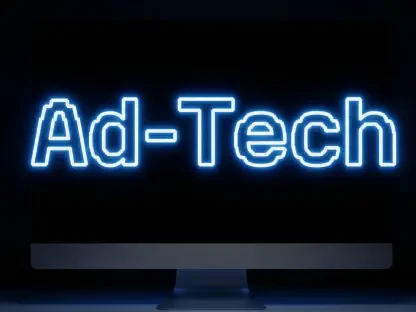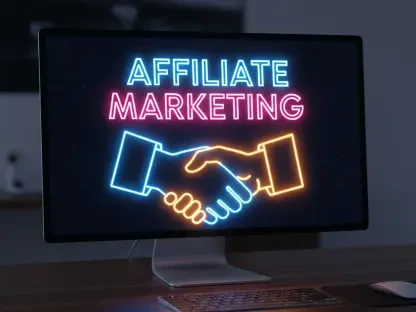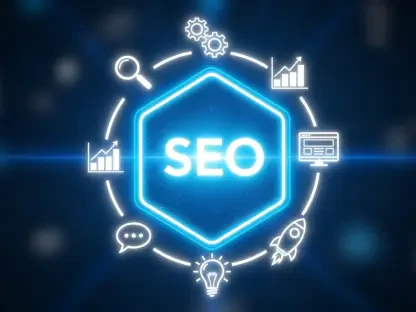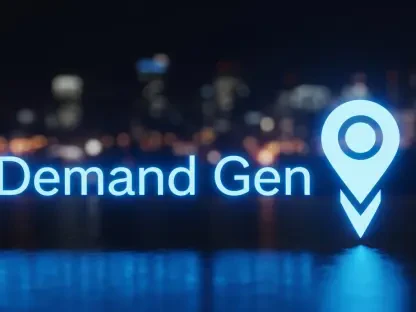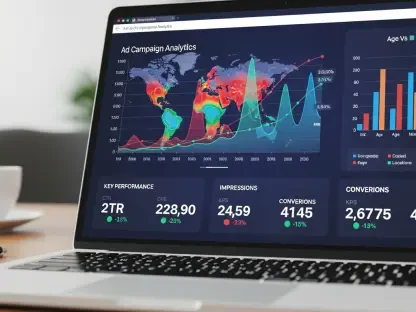In the ever-evolving landscape of digital marketing, email remains a cornerstone for building and sustaining customer relationships, often serving as the primary channel for lifecycle marketers aiming to nurture leads and retain loyal clients through targeted communication. With its ability to deliver timely, personalized messages, email marketing can drive significant engagement and conversions when executed strategically. However, the sheer number of potential touchpoints in a customer’s journey can be overwhelming, especially for those just starting out. Attempting to address every single interaction risks diluting efforts and wasting resources. Instead, focusing on a select few high-impact email programs can yield better results, ensuring that each message resonates with the audience at critical moments. This approach not only maximizes efficiency but also builds a foundation of trust and relevance. The following sections outline five essential email lifecycle programs to implement for optimal impact, along with one outdated strategy to abandon, helping marketers refine their focus and enhance their campaigns.
1. Laying the Groundwork with Welcome and Onboarding Emails
Welcome and onboarding emails stand as the most vital starting point in any email lifecycle strategy, creating a memorable first impression for new subscribers. These messages are crucial for ensuring that customers recall the brand long after their initial interaction, whether through a website sign-up or app registration. Data from e-commerce studies highlights their effectiveness, showing a remarkable 58.26% click-to-conversion rate, with roughly half of those clicks resulting in a purchase. To craft a successful welcome email, keep the content concise by avoiding lengthy brand histories and instead offering a quick snapshot of the company’s identity, services, and the reason for the customer’s sign-up. Additionally, prioritize brand visibility over an overly personal tone at this stage to solidify recognition, ensuring the recipient connects the email to their earlier engagement. Finally, capitalize on high initial interest by prompting a specific action—be it exploring content, connecting on social platforms, or starting a trial—that aligns with key performance goals.
Beyond the initial greeting, an onboarding email series can deepen the connection by focusing on education rather than immediate sales pitches. Think of this as akin to building rapport with a new acquaintance; pushing for a transaction too soon can alienate the recipient. Tailor the cadence and length of the series to match the customer’s context, such as sending messages within the first five or six days of a seven-day trial for software services. A critical tip is to avoid referencing prior emails, ensuring each message in the series stands alone to accommodate varying levels of recipient attention. This approach helps new users understand the value proposition without feeling overwhelmed or pressured, setting a positive tone for future interactions. By focusing on delivering helpful insights and guidance, onboarding emails can transform initial curiosity into lasting engagement, paving the way for a stronger relationship with the brand over time.
2. Recapturing Interest with Cart Recovery Emails
Cart recovery emails, often termed abandoned cart messages, target those customers who begin a sign-up or purchase process but fail to complete it, frequently due to distractions or competing priorities. These emails serve as gentle reminders, bringing the brand back into focus within the recipient’s inbox at a pivotal moment. Crafting an effective cart recovery email requires careful attention to timing, which should be tested to determine the optimal window—whether sending immediately after abandonment or waiting a few hours to a day for the nudge to feel natural. Waiting too long, however, risks the customer forgetting their intent altogether. The email must also feature a singular, clear call to action focused solely on completing the abandoned transaction or registration, avoiding distractions like unrelated offers or social media links that could divert attention from the primary goal of re-engagement.
Further considerations for cart recovery emails include reminding recipients of the specific items or actions they left behind, whether a product in a shopping cart or an incomplete sign-up form, to jog their memory and reignite interest. Transparency is also essential to maintain trust and comply with legal standards such as the CAN-SPAM Act in the U.S. and GDPR in Europe. This means clearly labeling the message as an advertisement, providing an unsubscribe option, and including a physical mailing address. A word of caution: while some strategies employ multiple follow-up emails in a sequence, this can backfire by annoying uninterested recipients, potentially damaging the sender’s reputation with email providers. Striking a balance between persistence and restraint ensures that these reminders remain effective without crossing into intrusive territory, preserving the integrity of the broader email marketing efforts.
3. Reviving Connections through Reactivation Campaigns
Reactivation campaigns, also known as re-engagement programs, address the inevitable reality of inactive subscribers who cease interacting with regular communications like newsletters or promotional emails. Such disengagement, while not necessarily a reflection of poor strategy, can harm the overall health of an email list by lowering key performance metrics. Inbox service providers often use engagement levels to gauge the quality of a sender’s content, and declining interaction rates may result in messages being relegated to spam folders. Implementing a reactivation campaign is therefore essential to maintain the efficacy of email as a primary marketing channel. Key steps include timing sends based on defined inactivity thresholds, such as 30 days for weekly content or up to 90 days as a maximum, offering a simple one-click option to remain subscribed, and automating the process with quarterly performance reviews to refine effectiveness.
The outcome of a well-executed reactivation campaign often involves a reduction in list size as unengaged contacts opt out or are removed, but this trade-off significantly boosts overall engagement rates and list health. Unlike other programs that focus on acquisition or immediate sales, reactivation efforts prioritize quality over quantity, ensuring that the remaining audience is genuinely interested in future communications. This strategic pruning can prevent long-term deliverability issues and enhance the sender’s reputation with email providers. By focusing on a streamlined, automated approach, marketers can efficiently manage inactive segments without diverting excessive resources, allowing more attention to be paid to active and high-value subscribers. Ultimately, this program serves as a critical maintenance tool, preserving the channel’s effectiveness for ongoing and future campaigns.
4. Rekindling Loyalty with Customer Recovery Emails
Distinct from reactivation efforts, customer recovery emails, often referred to as win-back programs, target lapsed customers who have previously made purchases or engaged deeply but have since gone silent. Retaining and re-attracting these individuals is typically more cost-effective than acquiring entirely new customers, as they already possess familiarity with the brand and its offerings. A successful win-back strategy leverages the fear of missing out by highlighting updates, new features, or enhanced products and services that have emerged since the customer’s last interaction. Coupling this with a clear next step, such as resuming a subscription plan or taking advantage of a special discount, can effectively encourage re-engagement without appearing overly pushy or desperate for their return.
The focus of customer recovery emails lies in rebuilding trust and reminding recipients of the value once experienced with the brand, rather than merely addressing inactivity as reactivation campaigns do. This nuanced approach acknowledges the prior relationship and seeks to reignite a sense of connection through relevant and enticing updates. Unlike broad promotional blasts, these messages should feel tailored to the individual’s past interactions, demonstrating an understanding of their history and preferences. By emphasizing what’s new or improved, the campaign taps into curiosity and the potential regret of missing out on beneficial developments. This targeted method not only increases the likelihood of re-engagement but also reinforces the brand’s commitment to evolving in ways that matter to its audience, fostering a renewed sense of loyalty among returning customers.
5. Sustaining Engagement with Regular Value-Driven Updates
Regular value-driven updates, commonly delivered through newsletters, play a pivotal role in keeping a brand top-of-mind without resorting to constant promotional content. Unlike sporadic corporate announcements or quarterly summaries, these emails prioritize delivering educational, thoughtful, and engaging material tailored to the audience’s needs and challenges. Particularly in B2B contexts where buying cycles are lengthy and involve multiple stakeholders, such content builds trust by addressing pain points and forging emotional connections. A well-crafted newsletter program ensures that subscribers view the brand as a reliable source of insight, rather than just another sales-driven entity, thereby enhancing long-term recall and relevance in competitive markets.
Another significant advantage of this approach is the creation of an owned audience, a dependable asset amidst the unpredictability of social media algorithms and search engine optimization fluctuations. By maintaining direct communication through newsletters, marketers can bypass external platform dependencies and speak straight to their subscribers with consistency. This channel’s reliability makes it an underrated yet powerful tool, especially for sustaining engagement over extended periods. The emphasis should always remain on providing value—whether through industry insights, practical tips, or compelling stories—ensuring that each email reinforces the brand’s position as a helpful partner. This ongoing dialogue cultivates a sense of community and trust, setting the stage for deeper customer relationships and eventual conversions without the need for overt sales tactics.
6. Moving Away from Prospect Nurturing Sequences
While many email programs add value, prospect nurturing sequences, often called lead nurture programs, represent a strategy worth abandoning due to their outdated and ineffective framework. These rigid email series operate on the flawed assumption that a fixed cadence of messages can predictably guide prospects toward a purchase, an approach particularly ill-suited to complex B2B sales cycles where decisions are neither linear nor quick. Such programs frequently prioritize the business’s messaging over genuine customer needs, failing to adapt to individual behaviors or timelines. Additionally, determining the appropriate duration for these sequences—whether months or years—remains an unresolved challenge, often leading to wasted effort and recipient fatigue that can harm brand perception.
A more effective alternative lies in leveraging newsletters to foster long-term relationships with prospects who have already expressed interest. Unlike forced nurture flows, newsletters deliver consistent value through relevant content, building trust over time without imposing a predetermined path. This method respects the varied pace at which individuals engage with a brand, offering insights and updates that keep the connection alive organically. By shifting focus from rigid sequences to flexible, value-centric communications, marketers can better align with customer expectations and needs. Dropping prospect nurturing sequences in favor of a more dynamic approach ensures resources are allocated to strategies that resonate more authentically, ultimately driving stronger engagement and loyalty.
7. Strategic Reflections on Email Lifecycle Approaches
Looking back, the journey through various email lifecycle programs revealed a clear path for marketers aiming to refine their strategies. The emphasis on welcome and onboarding emails set a strong foundation, while cart recovery and reactivation campaigns tackled specific moments of disengagement with precision. Win-back efforts and value-driven newsletters further solidified relationships with lapsed and active audiences alike, ensuring sustained relevance. Reflecting on what was abandoned, the decision to move away from prospect nurturing sequences underscored the importance of adaptability over outdated rigidity. Each program implemented contributed uniquely to nurturing customer trust and maintaining channel health.
Moving forward, the next steps involve a commitment to continuous testing and documentation of these email initiatives to optimize their impact. Prioritizing a customer-centric mindset remains paramount, ensuring every message delivers tangible benefits to recipients at different stages of their journey. By focusing on what truly matters to the audience, marketers can refine their approach, adapting to evolving needs and preferences. This iterative process promises not only to enhance current efforts but also to prepare for future innovations in lifecycle marketing, keeping engagement and retention at the forefront of strategic planning.




